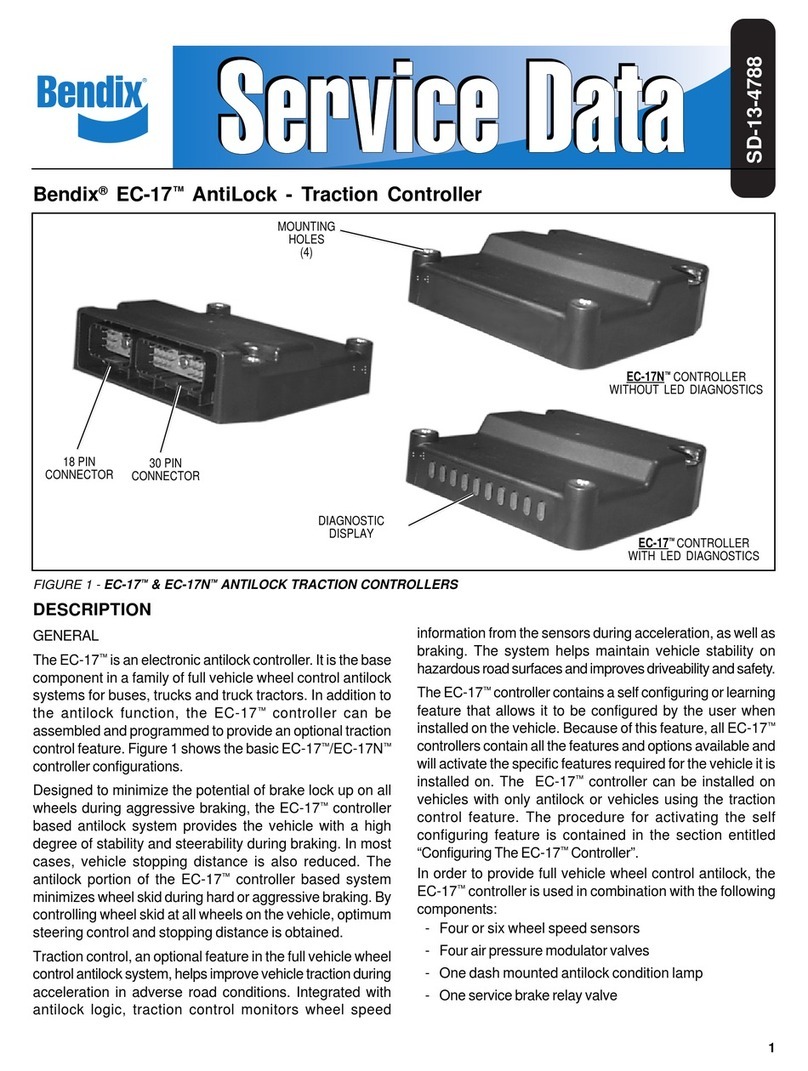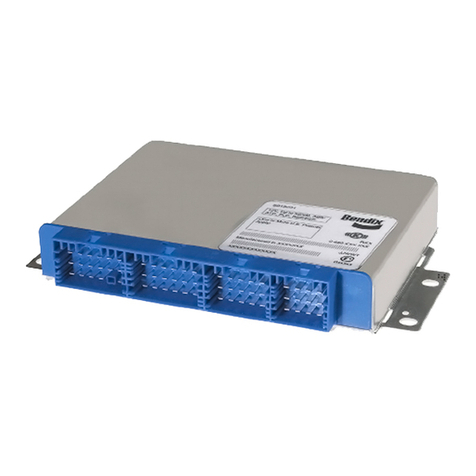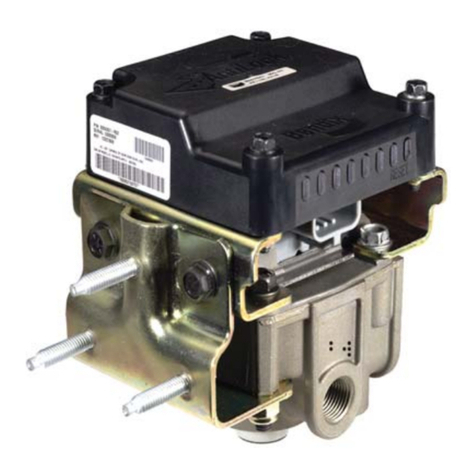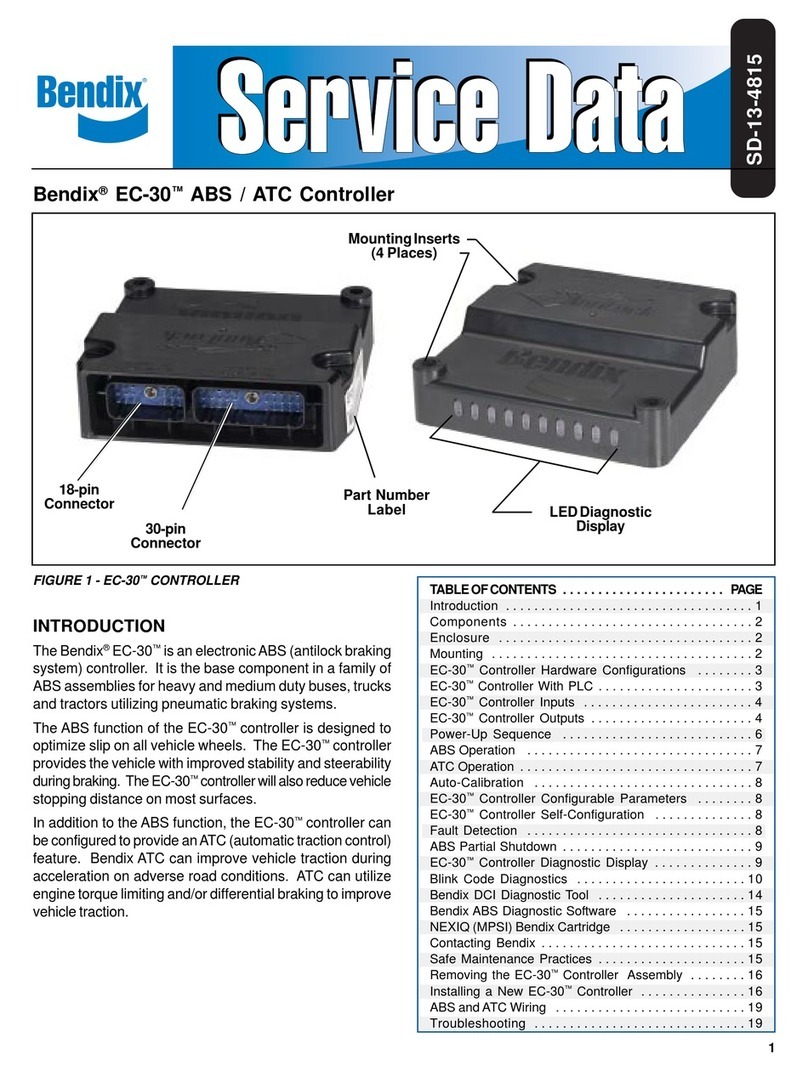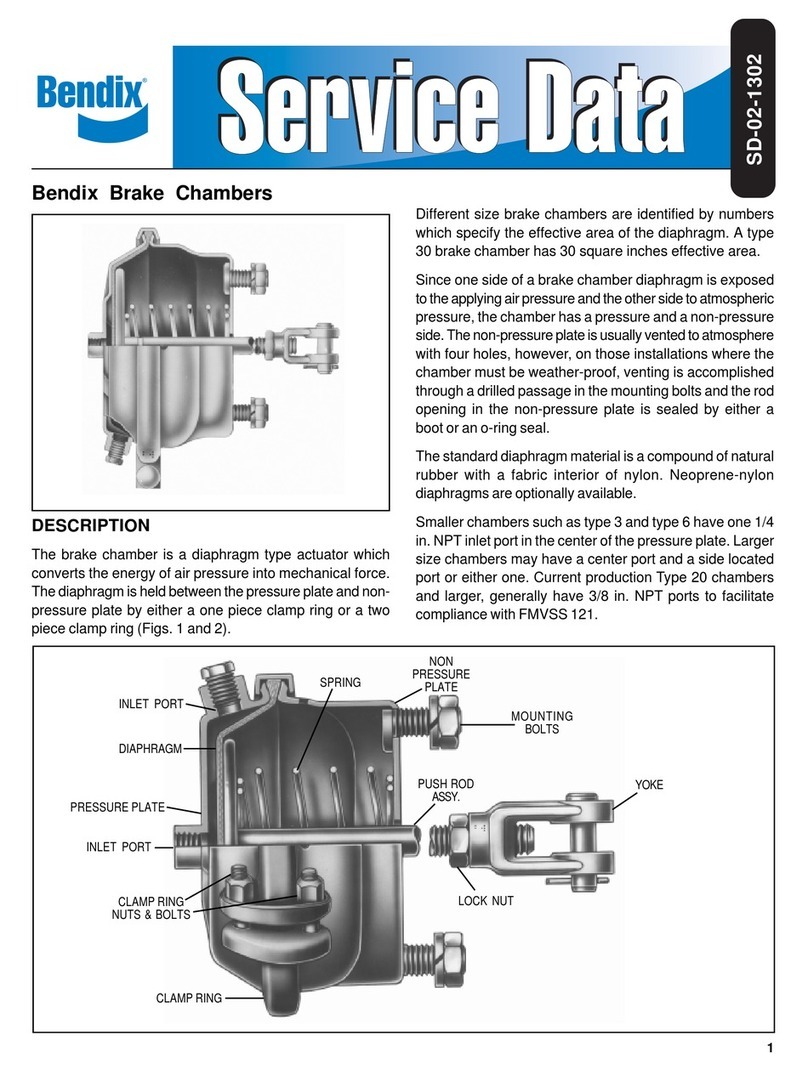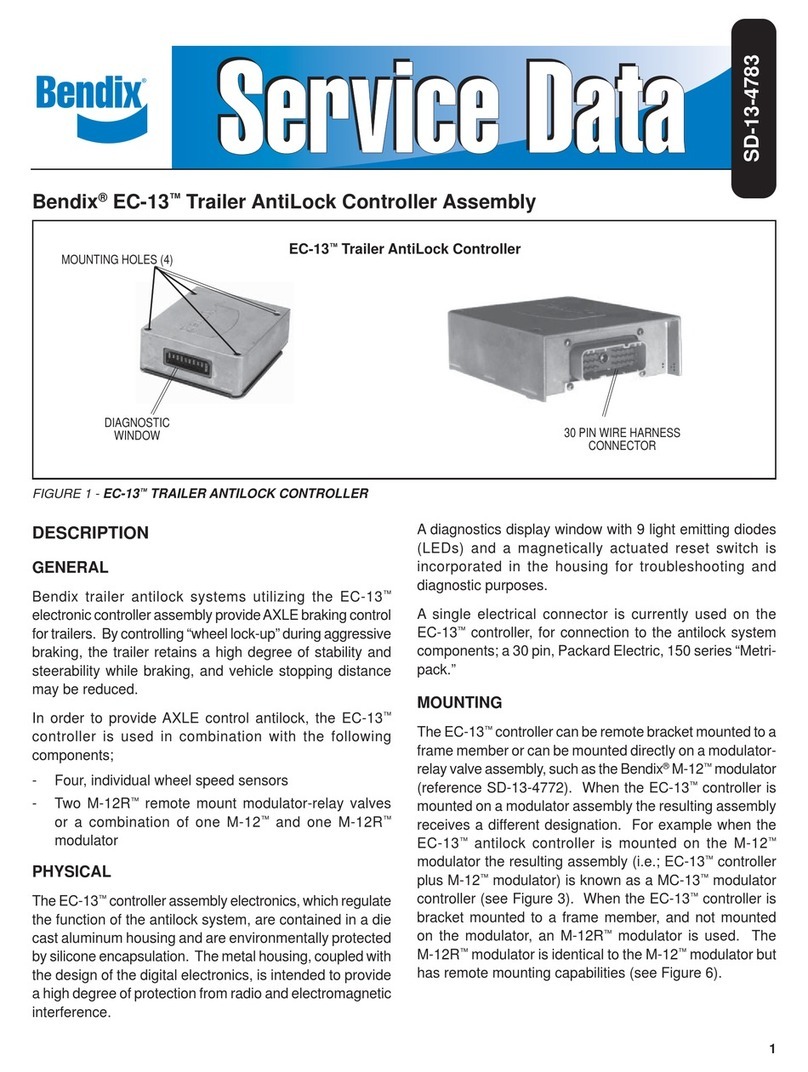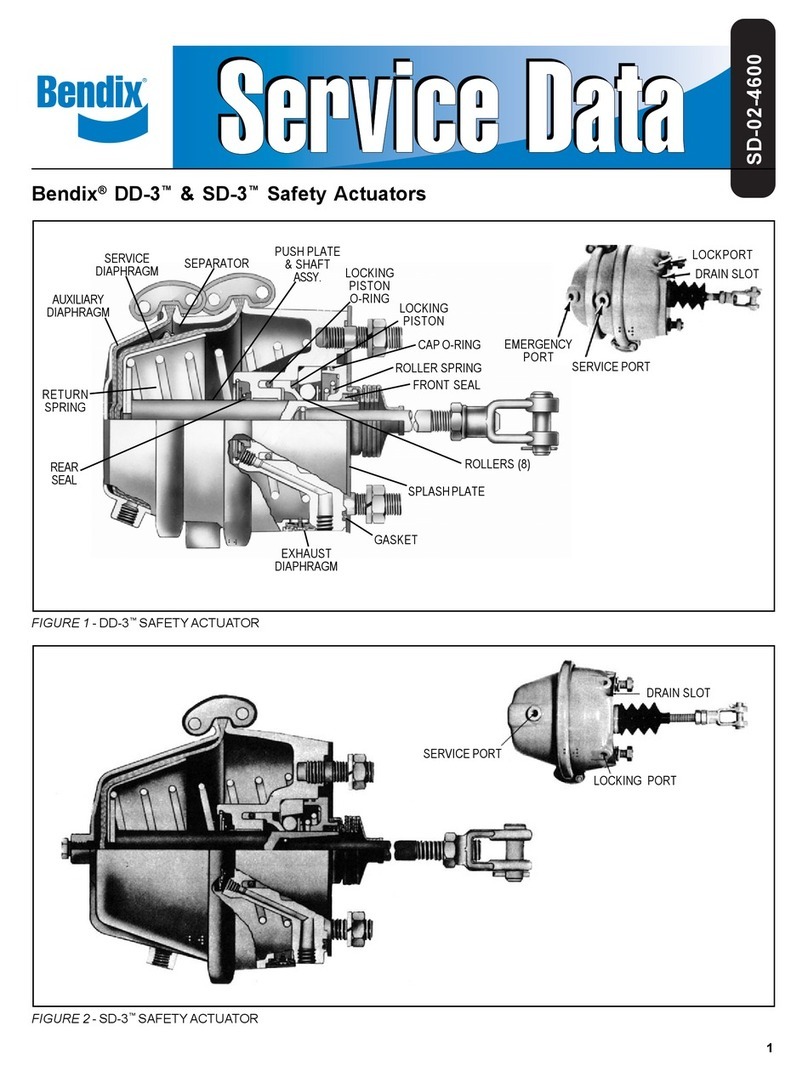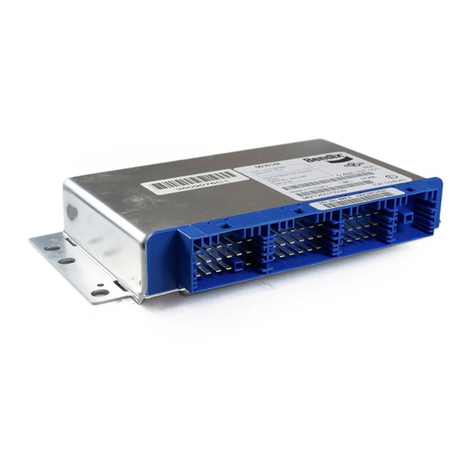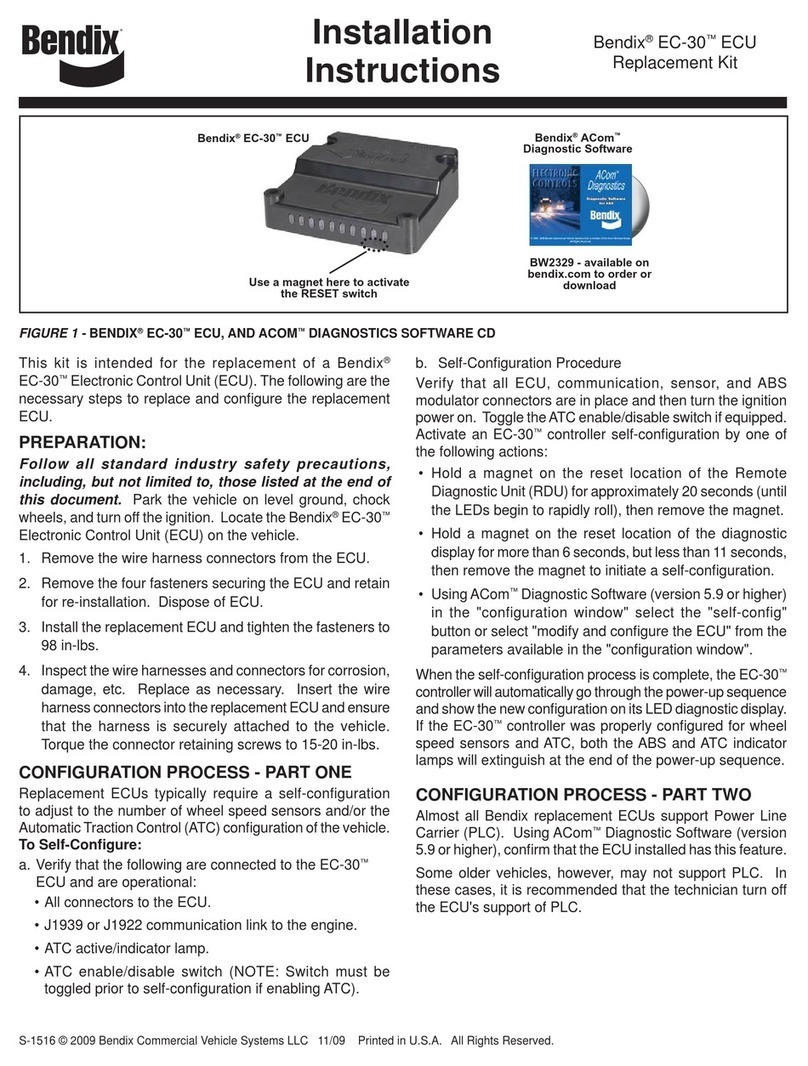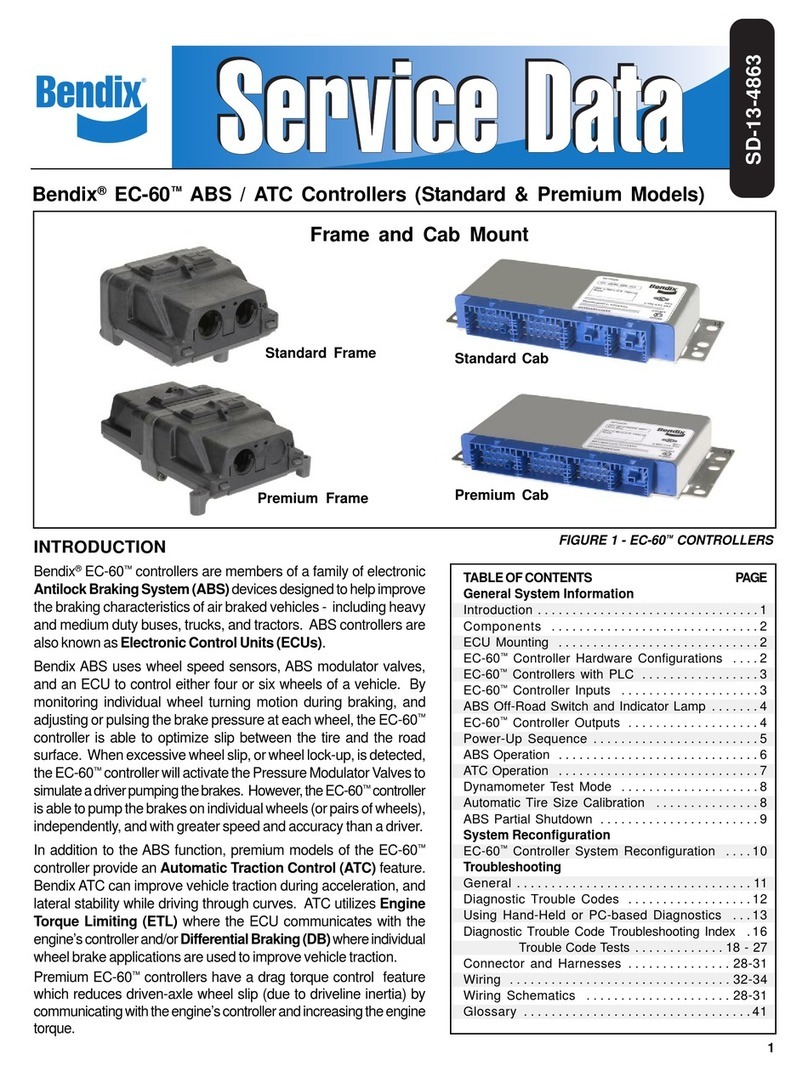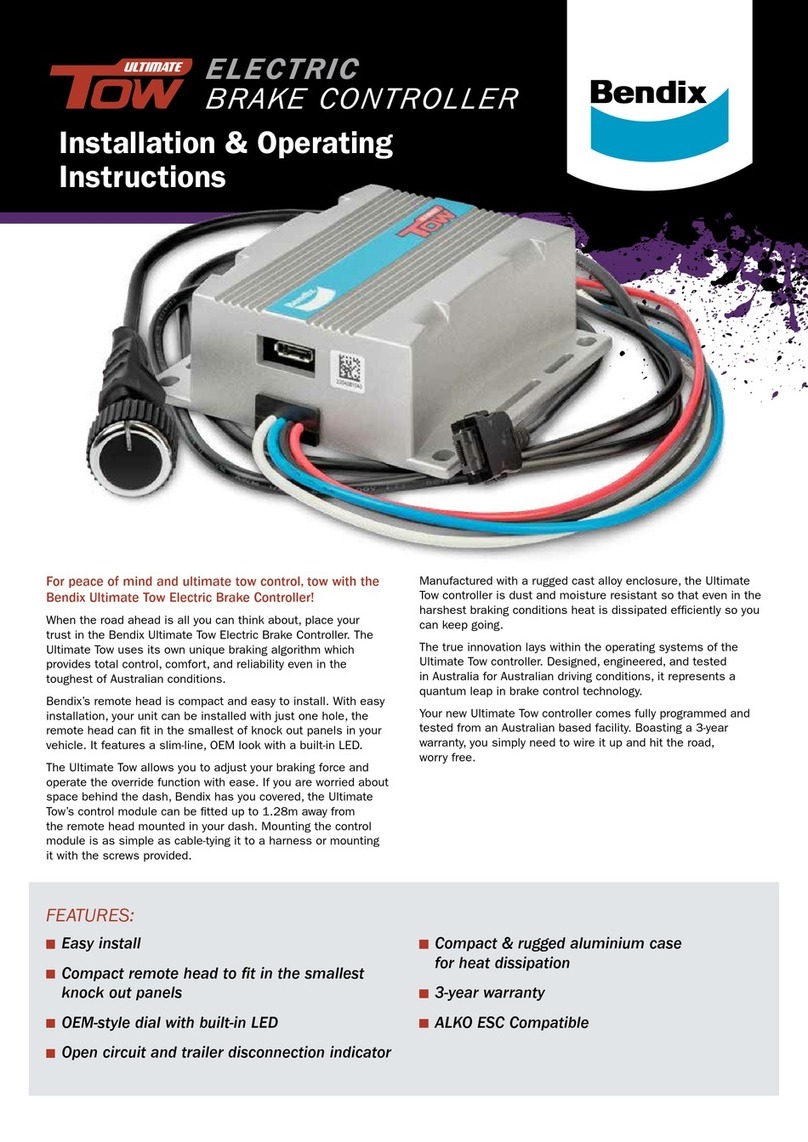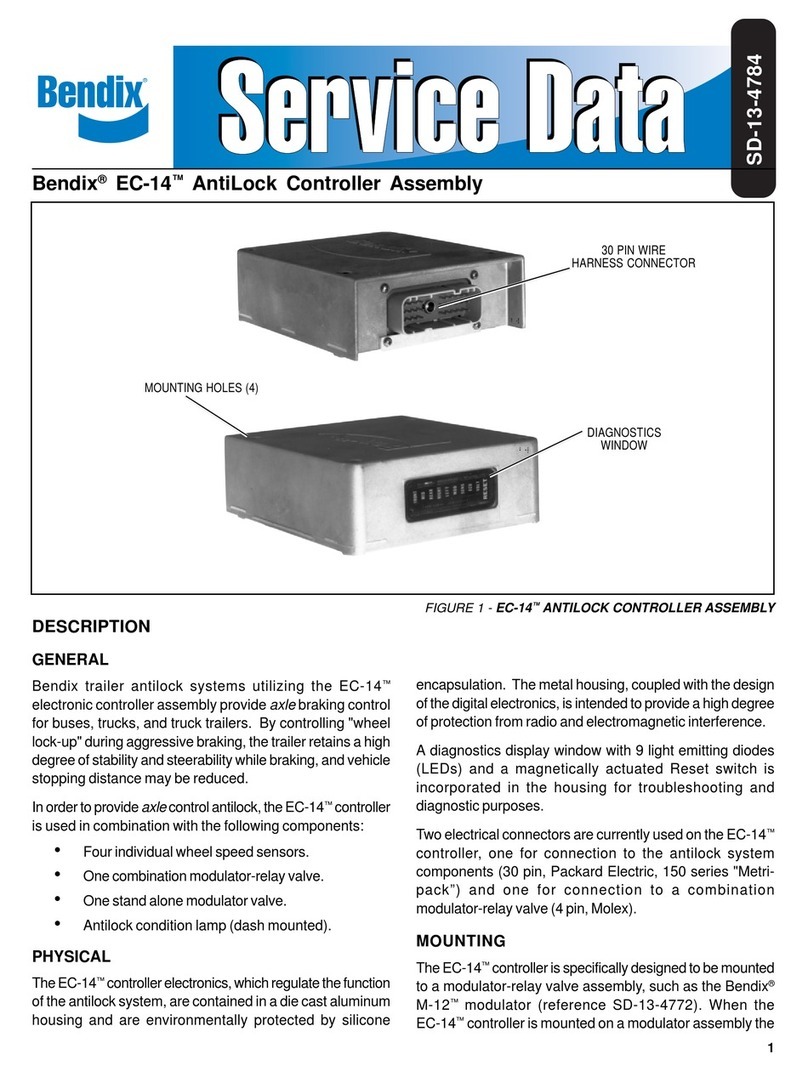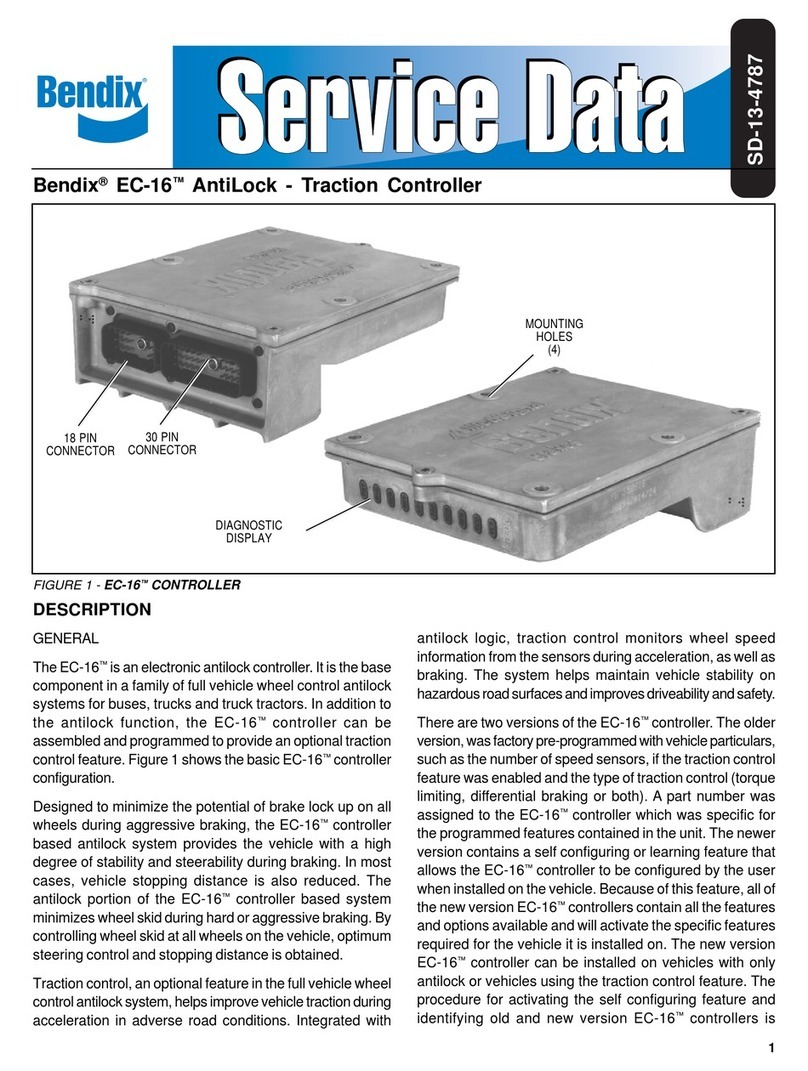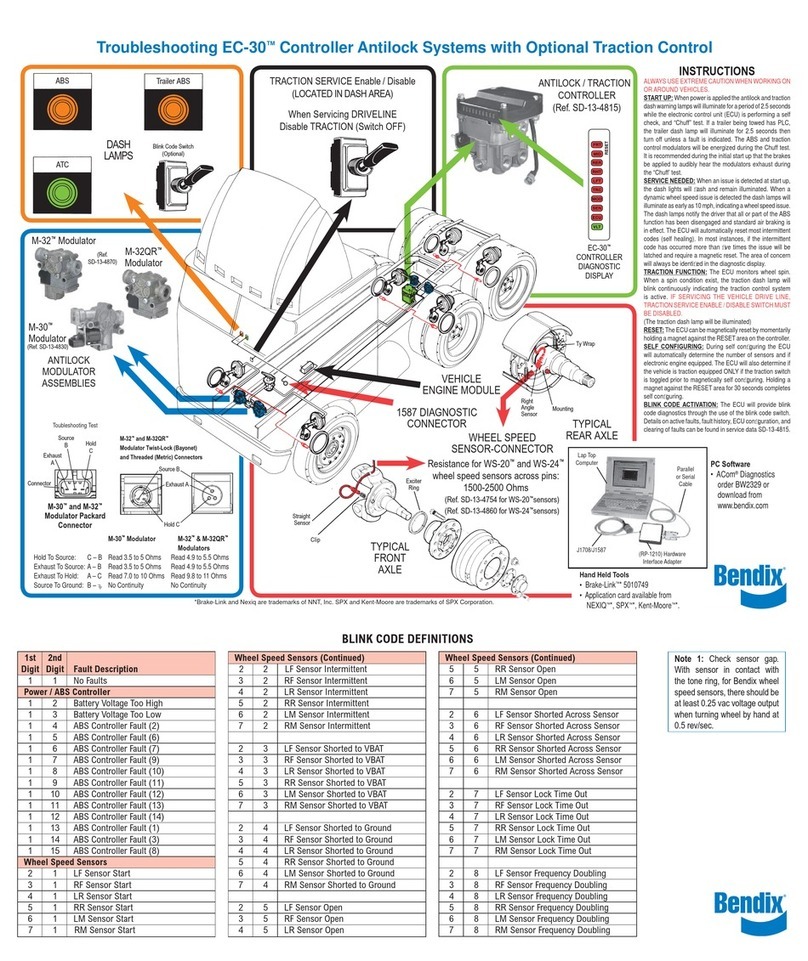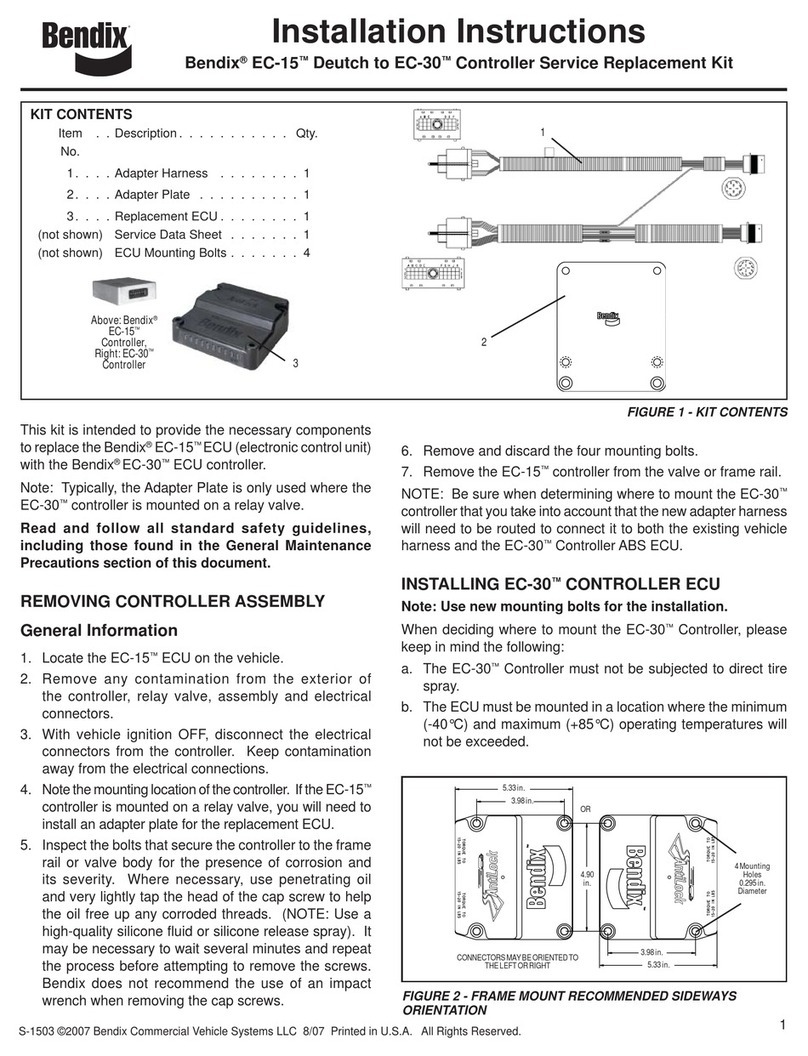
7
2. Do not pierce wire insulation when testing. Check for
power, ground or continuity by disconnecting the
connector and testing the individual pins or sockets in
theconnector.
3. Always check the vehicle hand book for wire and
connectoridentification.Individual wireidentificationwill
differdepending uponthetype ofconnectors inuse, the
vehiclemanufacturer,and thesystem featuresinuse.
4. Whilethe retarderdisable andseriallinkconnections(3
total)are presentonall EC-15™controllersthey are not
alwaysused.
PREVENTATIVEMAINTENANCE
Every3 months; 25,000miles; or900operating hours,
1. Check all wiring and connectors to ensure they are
secureand freefromvisibledamage.
2. AlthoughtheEC-15™controllerincorporatesaselfcheck
diagnostics, the LED display should be inspected to
ensurethat theyare functional.With thevehicle ignition
on,amagnet(800gauss;capableofpickingup3ounces)
held to the LED reset switch should cause all of the
LED’stoilluminate.Ifone ormoreof theLED’sDO NOT
ILLUMINATEandtheantilockconditionlamponthedash
indicates the system is functioning properly, the
non-illuminated LED(s) should be noted for future
reference. Although the diagnostic capabilities will be
limited,thesystem willcontinueto functionasdesigned.
3. Road test the vehicle by making antilock stop from a
vehicle speed of 20 miles per hour. When an antilock
stop is made, the modulator solenoids pulsate and an
audibleburstof aircanbe heardfromoutside ofthecab.
Thewheelsshouldnotenteraprolonged“lock”condition.
WARNING! PLEASE READ AND FOLLOW
THESE INSTRUCTIONS TO AVOID
PERSONAL INJURYOR DEATH:
When working on or around a vehicle, the following
general precautions should be observed at all times.
1. Park the vehicle on a level surface, apply the
parking brakes, and always block the wheels.
Always wear safety glasses.
2. Stop the engine and remove ignition key when
working under or around the vehicle. When
working in the engine compartment, the engine
should be shut off and the ignition key should be
removed. Where circumstances require that the
enginebe in operation,EXTREMECAUTION should
be used to prevent personal injury resulting from
contact with moving, rotating, leaking, heated or
electrically charged components.
3. Do not attempt to install, remove, disassemble or
assemble a component until you have read and
thoroughly understand the recommended
procedures. Useonly the propertools and observe
all precautions pertaining to use of those tools.
4. If the work is being performed on the vehicle’s air
brake system, or any auxiliary pressurized air
systems,makecertain to drain the airpressurefrom
all reservoirs before beginning ANY work on the
vehicle. If the vehicle is equipped with an AD-IS™
air dryer system or a dryer reservoir module, be
sure to drain the purge reservoir.
5. Following the vehicle manufacturer’s
recommendedprocedures, deactivate the electrical
system in a manner that safely removes all
electrical power from the vehicle.
6. Never exceed manufacturer’s recommended
pressures.
7. Never connect or disconnect a hose or line
containing pressure; it may whip. Never remove a
component or plug unless you are certain all
system pressure has been depleted.
8. Use only genuine Bendix®replacement parts,
components and kits. Replacement hardware,
tubing, hose, fittings, etc. must be of equivalent
size, type and strength as original equipment and
be designed specifically for such applications and
systems.
9. Components with stripped threads or damaged
parts should be replaced rather than repaired. Do
not attempt repairs requiring machining or welding
unless specifically stated and approved by the
vehicle and component manufacturer.
10. Prior to returning the vehicle to service, make
certain all components and systems are restored
to their proper operating condition.
REMOVING THE EC-15™CONTROLLER
ASSEMBLY
EC-15™CONTROLLERMOUNTEDONANTILOCKRELAY
VALVE
1. Identifyand remove all airlines connected totheunit.
2. Disconnectthe electricalconnector(s) fromthe EC-15™
controller.
3. Note and mark the mounting position of the controller/
relay valve assembly on the vehicle. Loosen, remove
and save the nuts on the mounting hardware that
attaches the controller relay assembly bracket to the
vehicle.Remove the relayvalve andEC-15™controller
assemblyfrom thevehicle.
4. Remove as much contamination as possible from the
exterior of the assembly making sure to keep the
contaminationaway fromtheopen ports.
5. Note and mark the position of the EC-15™controller
relative to the antilock relay valve. Remove and retain
the four cap screws that secure the EC-15™controller
totheantilockrelayvalve.Carefullyseparate theEC-15™
controller from the antilock relay valve making certain
nottodamage thegasketbetweenthe twocomponents.
Peel the gasket from the EC-15™controller or antilock
relayvalveand retainforreuse.Note:Use anewgasket
if damaged during removal or if a new gasket is
immediatelyavailable.
